Today, we review the iBasso DC-Elite USB DAC/AMP dongle. It is selling for $449 USD.
Disclaimer: iBasso sent us the DC-Elite for this review. As always, I am here to share my honest experience with the product. We thank Paul from iBasso for the opportunity.
iBasso
iBasso Audio is a well-known audio manufacturer, known for crafting high-quality portable audio products since its inception in 2006. Based in Shenzhen, China, iBasso has been dedicated to delivering exceptional sound experiences to audiophiles and music enthusiasts worldwide.
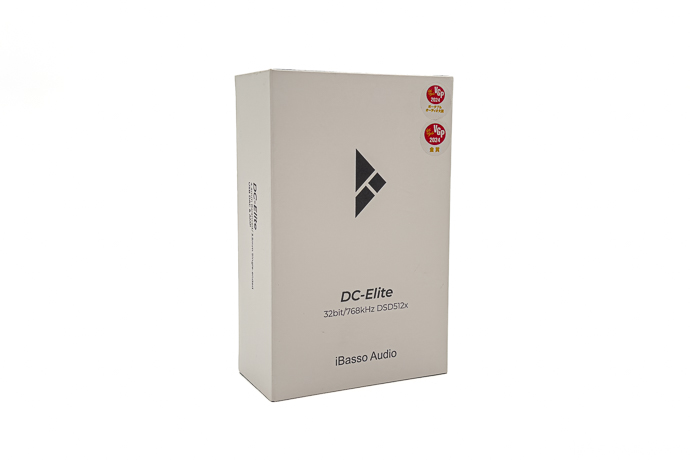
With a strong focus on research and development, iBasso continually pushes the boundaries of audio tech, offering a wide range of products, including digital audio players, amplifiers, DACs, headphones, and IEMs. You can reach their website through this link.
iBasso DC-Elite
The iBasso DC-Elite is the latest addition to the company’s portable USB DAC/AMP arsenal. It is the current flagship, and iBasso states that a severe amount of R&D went into this product’s design from the inside out. It is often mentioned as the miniaturized DX320Max, which was a limited edition DAP from iBasso that was launched a while back. I want to give a little spoiler here as it surprised me with its solid performance. It is one of the best USB DAC/AMPs I’ve heard in a long while, albeit with a few quirks here and there. In this review, we’ll go over all of those details together.
The DC Elite uses BD34301EKV, the flagship of the MUS-IC series of the ROHM company. It’s rivaling ES9068AS and alikes. As we always say, the individual chip does not matter, as the implementation is and always will be the most vital element regarding sheer sound quality. That’s where the DC Elite shines, as it utilizes complex audio circuitry with LDOs, a stepped Attenuator, x6 op-amps, and a custom-written FPGA algo coupled with an NDK oscillator. iBasso states they carefully chose strictly premium audio components previously reserved for their high-end players for the USB DAC AMP to maximize its performance. The DC-Elite costs $449 USD and is available through iBasso’s wide network of distributors.
You can explore key highlights and specifications below.
- Flagship ROHM BD34301EKV DAC
- PCB with x6 OP-AMPs, FPGA, LDOs, Crystal Oscillator & more.
- 24-Step 4-Section Mechanical Stepped Attenuator
- Titanium Alloy Chassis
- 3.5mm: 162mW@32Ω | 4.4mm: 280mW@32Ω
- S/N Ratio 121dBA
- Dynamic Range 118dBA
- Output Impedance < 0.4 Ohms
- PCM Support 32bit/768kHz
- DSD Support DSD64 to DSD512
- iBasso UAC App Support
- 60gr Weight
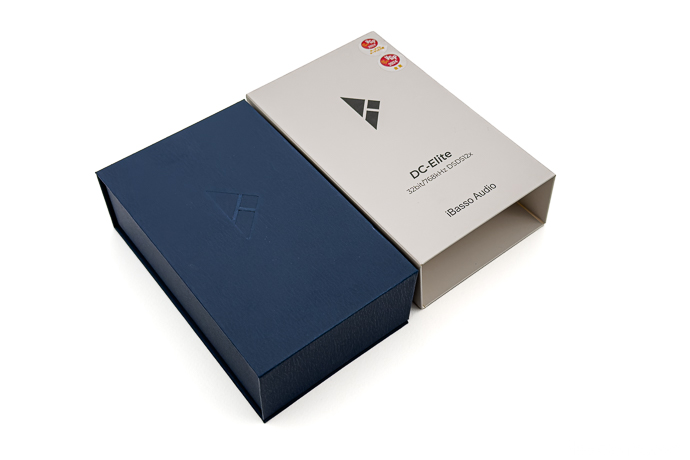
Packaging & Accessories
The DC-Elite is packaged in a medium-sized dark blue cardboard box with a grey sleeve. The exterior of the box resembles the titanium finish of the DC-Elite. The packaging is not flashy or ostentatious, with only the iBasso logo, the DC-Elite name, and the VGVP award badges that the DC-Elite has won on the sleeve. Sliding off the grey sleeve brings us to the flip-open main box.
Opening the lid reveals the DC-Elite nestled within its foam compartment. Just below lies another layer containing the accessories. The unboxing experience feels first class as we dig deeper and discover a beautiful dark green leather case for the DC-Elite. Just to the left, we see a velvet pouch containing the braided USB-C to USB-C and USB-C to Lightning cables. There’s also a USB-A to USB-C female adapter that allows you to use the cables with traditional USB-A ports.
The cables are high quality and feel durable. The included accessories and the unit itself look great and make an excellent first impression. Let’s move on to the aesthetics.
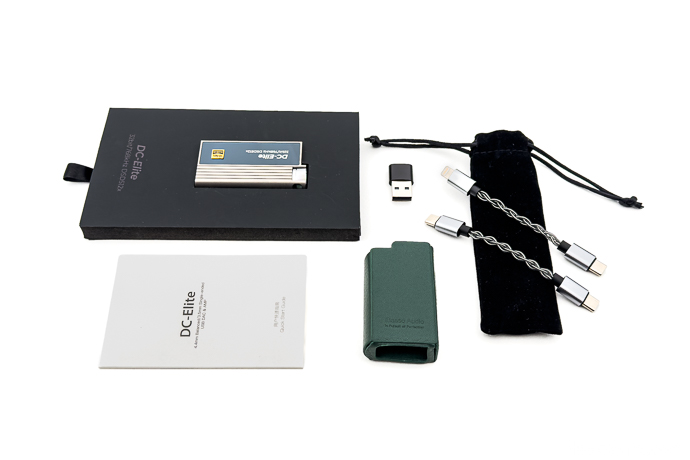
Design & Build Quality
iBasso maintains a well-earned reputation for exceptional build quality and meticulous material choices. Their dedication to craftsmanship is easily noticeable in the DC-Elite, and I feel the same sense of quality I experienced with their DX50 player over a decade ago. While slightly larger than some USB DAC/AMPs (measuring 64mm X 35mm X 14.5mm), the DC-Elite remains portable at only 60 grams.
Its titanium chassis, sculpted through precision CNC machining, balances lightweight durability with a premium feel. With its volume guard to prevent accidental adjustment, the oversized volume potentiometer immediately draws the eye. Moreover, its sharp-edged aluminum chassis features tempered glass accents, while the protruding vertical ridges all around offer a touch of industrial flair, resembling heatsinks. A slim, soft LED indicates formats (PCM, DSD, etc.), and a single button on the left provides additional control. In my opinion, the design is a masterful blend of form and function.
Durability-wise, I believe it can easily withstand the daily rigor and look chic while doing so. The USB-C port and the headphone output sockets feel rigid and robust, as usual with every other iBasso device. Kudos to the team for a job well done.
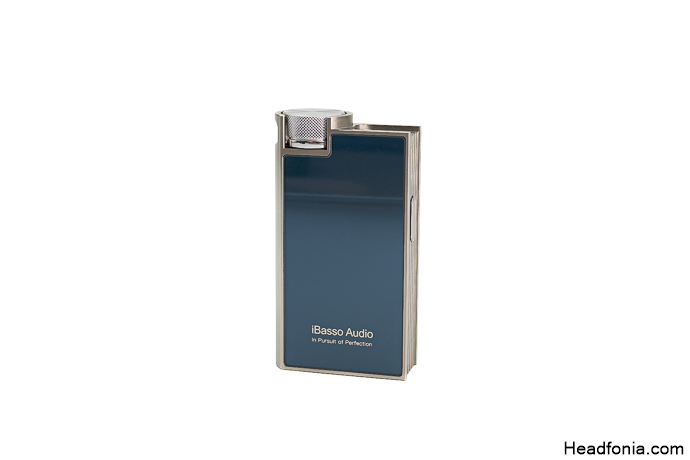
App Support, Technicalities & More
The DC-Elite is a plug-and-play device that plays well with many operation systems. I’ve done my testing with all kinds of devices, including Windows, Mac, Android and iOS. You can keep an eye on the downloads section for Windows drivers here. On this page, iBasso UAC app is also present; you can and should opt for this one instead of Google Play, as this one tends to be updated more frequently.
Before proceeding with the iBasso’s UAC App, I’d like to point out that this device has interesting hardware that is usually reserved for more premium desktop devices. It features a stepped attenuator instead of a regular potentiometer. Regular potentiometers may have issues with channel imbalance as they are not as linear as a true stepped attenuator.
Inside a regular potentiometer volume point max / volume point low are connected by a length of resistive material. There is a wiper inside that is connected to the potentiometer shaft and has a moving contact point that can touch the resistive component anywhere along its length. A stepped attenuator, on the other hand, has multiple resistors and, therefore, steps, depending on the build (for the DC-Elite, there are 24) and is usually regarded as better sounding in the audiophile sphere. Believe it or not, the volume pots, no matter the kind, affect the sound quality drastically, and iBasso has found a way to maximize DC-Elite’s performance based on their R&D with the DX320Max.
However, like all good things in life, this one too, has a quirk that might seem bizarre if you’re trying a stepped attenuator for the first time. Due to its design, there is a momentary loss of volume between the steps. This is perfectly normal but worth pointing out. Also, due to the design, the volume levels are limited (24); however, iBasso’s UAC application lets you fine-tune the volume step between 0dB to -2db to cover a broader range of volume adjustment. While we’re on the subject, the UAC app lets you switch filters, adjust DSD gain, turn on SPDIF mode, and adjust the DSD filter. Also, DC-Elite has a coax support that can be toggled on by pressing the side button long.
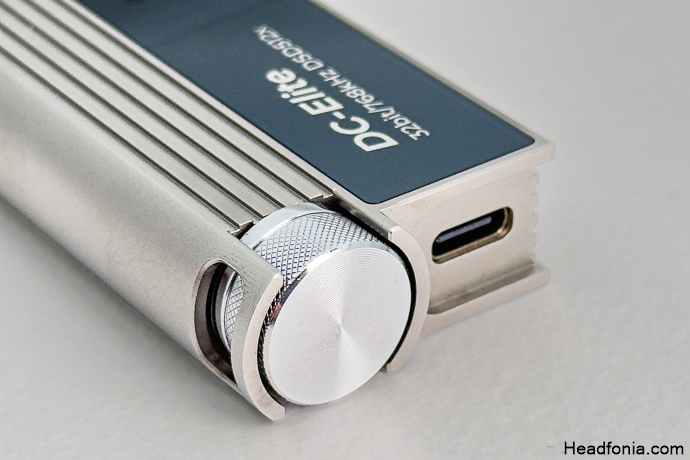
Another important thing I discovered is power-related. The performance of the DC-Elite varies depending on the source device I connect it to. Therefore, after testing it with various devices, I discovered that the DC-Elite could not be fully utilized by some phones and that some of these phones needed to supply more power than they could deliver. I tried a total of four Android phones and will leave the results and my findings below. I should also mention that I really like the sound of the DC-Elite from any device, but when the power requirements are met, it reaches a really impressive point and surpasses my long-time favorite, Mojo 2, SQ-wise. The findings below are highly variable data depending on the phone, firmware, android version, etc., and I share them only to provide information to people who have the same phones. The rating is based on the sound quality I hear and is intended to give an idea of utilization based on various devices.
- iPhone 15 Pro Max / iOS 17.4.1 – 7.5/10
- Macbook Pro 14 2021 / MacOS 14.1.2 – 10/10
- MSI Z790 Tomahawk Custom PC / Windows 11 Pro 23H2 – 10/10
- Poco F5 Pro / Android 14 HyperOS – 8/10 through the UAPP Application
- Xiaomi Mi9SE / Android 13 MIUI 14 – 7/10 through UAPP Application
- iPhone 14 Plus / iOS 17.3 – 7/10
The solution to this situation is to measure the required input using measurement equipment, and once the power requirements have been determined, perhaps a Y-type USB-C can be made and used to supply the required power from an external power supply (like a power bank for the on-the-go use-case), but as I don’t have the equipment to try this out, let’s leave it at that for now.
Despite the quirks, it is the best non-battery-powered USB DAC-AMP I’ve ever heard and can rival and outperform the Chord’s Mojo 2 and Topping’s G5.
The review continues on Page Two, after the click HERE or by using the jump below.
Page 1: iBasso, DC-Elite, Packaging & Accessories, Design & Build Quality, App Support, Technicalities & More.
Page 2: Sound Impressions, Low, Mid, High, Technical Capability, Comparison, Last Words






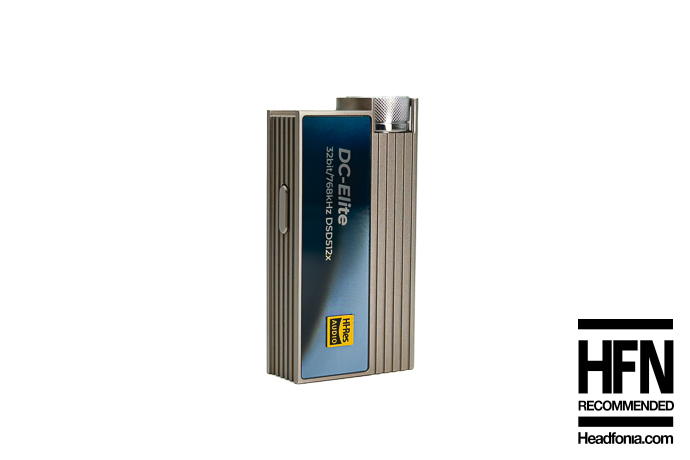
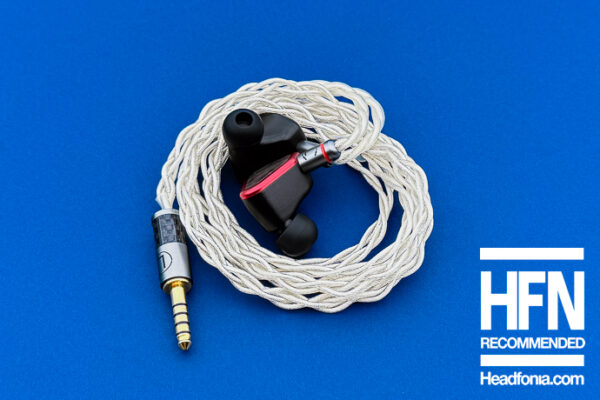
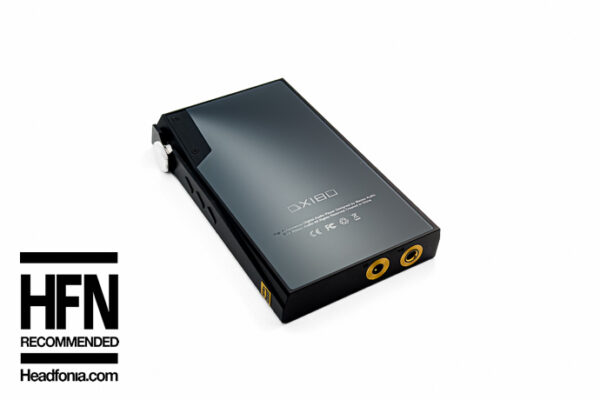
Haodong Li
So after all this time have you heard of luxury and precision w4?
Tibor
Hello, good stuff, nice reading, ty.
So it is possible for you to do some comparisons with desktop gear please?